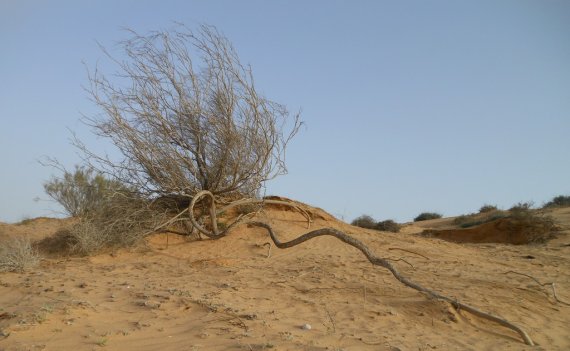© Vincent Felde (distributed viaImaggeo)
At least, that is what scientific research financier NWO thinks. Soil physicist Martine van der Ploeg and professor holding a personal chair in soil biology Gerlinde de Deyn will receive 50,000 euros from NWO to carry out research on the subject. Skin care for Mother Earth is one of five projects that were awarded an Open Mind grant.
Creative Innovation
‘I really like the Open Mind approach’, says Van der Ploeg to motivate her participation in the competition. ‘But I did not have any truly good ideas in the last few years. The idea really must be good, otherwise it’s a waste of time and effort to participate.’ She was inspired by the Creative Innovation: Science meets Art project that was organised on campus this past anniversary year. During the project, Van der Ploeg collaborated with the New York artist Cody Healy-Connely.
The collaboration taught me to let go of the concept that an idea must be feasible.
Martine van der Ploeg
‘The collaboration taught me to let go of the concept that an idea must be feasible’, she explains. Feasibility limits the free spirit. The absence of the burden of a priori feasibility led to the idea to restore strongly degraded agricultural lands by adding the right soil life. According to Van der Ploeg, the focus is on specific bacteria that retain water.
Desertification is currently mainly tackled by planting trees or preventing erosion. But this turns out to be insufficient for the soil to fully recover. Van der Ploeg thinks the solution might be found in the microbes that occur in the soil when it was still healthy. By restoring these microbes, it might be possible to roll back the desert formation.
Biofilm
Van der Ploeg is convinced that such bacteria that regulate moisture exist. ‘There are bacteria that create a kind of film from biopolymers, which can bind water. That way, they contribute to the structure and fertility of the soil. I know one bacterium that does exactly that, but we want to find a whole group of such microorganisms.’
The next step will be to find the right match between bacteria and soil. ‘We do not want to introduce an invasive exot, obviously, as the cure would be worse than the disease.’ Van der Ploeg emphasises that it is not their aim to bring the desert to life. ‘Deserts are their own ecosystems. We want to help soils that received a shock for some reason and were unable to recover.’
Weekly updates about studying and working at WUR? Subscribe to the newsletter now!

